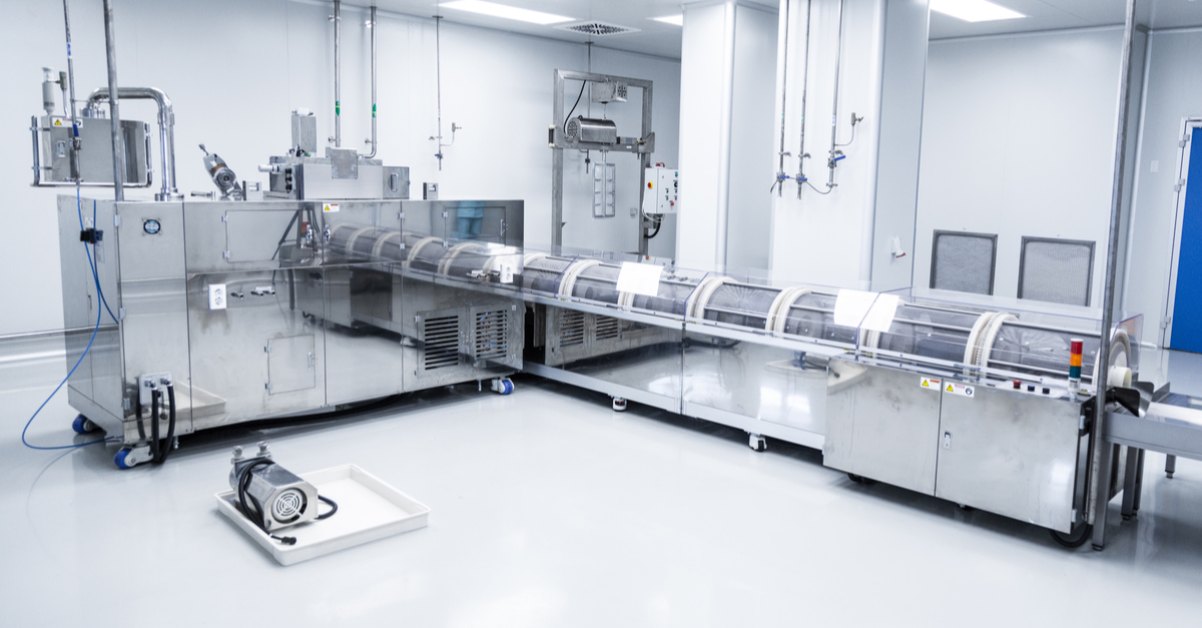In many industries, one of the most common reasons for defective goods is dust contamination, and they have adopted different cleanliness standards (see the Wikipedia page on cleanrooms and factory cleanliness).
If you have visited Chinese factories in certain industries, you have probably seen their efforts in that regard. During our factory audits, we always give a grade about general organization and cleanliness.
What advice can I offer about maintaining a clean factory without spending a fortune?
You may not truly be seeing a clean factory despite air cleanliness measures being in place
Some of the standards and measures adopted by Chinese factories are ‘for show only’. Let’s take air showers in PCBA factories, for example.
In the electronic industry, SMT machines and even assembly lines tend to be in a clean room behind an air shower. These air showers tend to be for impressing visitors only:
- They blow air for only about 20 seconds, which doesn’t make much difference. In paint shops, where dust creates many defects, air is blown for 2 full minutes. And, in itself, it is far from sufficient to keep the inside clean.
- Air showers in China are often inexpensive and can only contain 2 or 3 people. When 80 people need to get out and have lunch, do they really go through it?? If the normal door is unlocked, you know what is going to happen.
Now, let’s look at the first steps that really make a difference and cost next to nothing.
What are the ’80/20′ of air cleanliness for a factory?
What are the very basics to avoid most of the dust out of a building?
- Look in the air vents: is there a filter, and is it changed every 2-3 months? Is the inside of the air duct clean? (It can be wiped with a wet mop.)
- Keep cardboard materials away from the area as much as possible, as it was found in many instances to be the largest source of dust in the whole factory. You may use plastic curtain made like a clean tunnel, to keep cartons aside. You can then vacuum, or wipe with a damp cloth, the cardboard storage area on a regular schedule.
- Have the ground painted or coated, as concrete creates a lot of dust — especially low-quality concrete.
- Avoid certain types of clothes such as blue jeans.
- Don’t open the windows, except if a fan is affixed to them (to create positive pressure and keep most contaminants from coming in).
- Get rid of dust all around the factory on a weekend: clean the whole place with a vacuum cleaner and a wet mop, and go everywhere there might be a buildup of dust.
- Have someone walk all around the factory with a wet mop at a certain schedule (e.g. once every 2 days).
If one part of the operation needs to be kept at a higher standard of cleanliness, set up a transparent plastic film around it. People walk into it through a slit, and a fan keeps positive air pressure.
All this is inexpensive. It is not an investment of over 1,000 USD for a small factory.
These good practices help with quality, with equipment maintenance, with safety (think of the wooden chips in corners of some furniture workshops), and with morale (who wants to work in a pigsty?).
Have you seen some of your suppliers do this well? Have they applied any smart and effective measures? Let me know by leaving your comment!
Ultimate Guide To Sourcing From China And Developing Your Suppliers [eBook]
This FREE eBook starts from the beginning, discussing whether you need to hire a sourcing agent, and follows the sourcing process right through to developing a trusted supplier’s quality and productivity.
There are 15 chapters over 80+ pages to explore, providing exhaustive guidance on the entire sourcing and supplier development process from start to finish, including:
- Identifying suppliers,
- Negotiations,
- Quality inspections,
- Developing Chinese suppliers,
- Improving factory quality and productivity,
- and much more…



Can I have this free Ebook to understand better, below are most needed.
Identifying suppliers,
Negotiations,
Quality inspections,
Developing Chinese suppliers,
Improving factory quality and productivity,
Thank you.
Sure. You can see our free e-books on https://www.sofeast.com/resources.